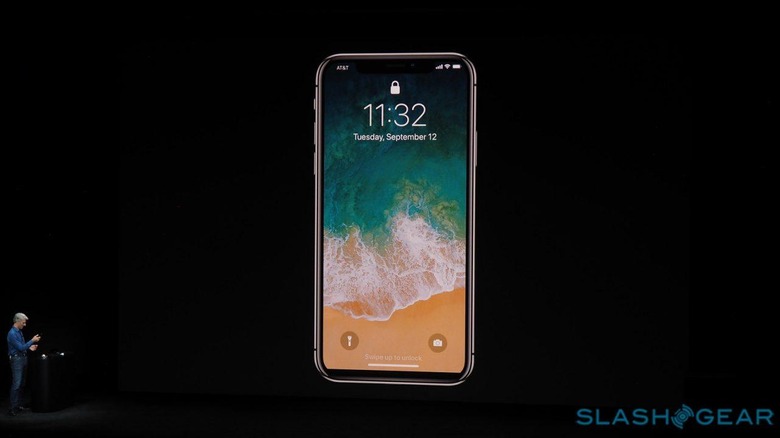iPhone X's Face ID Demo Fail Was Security Not Screwup
The demo gods weren't smiling on Face ID. One of Apple's headline features of its brand new flagship iPhone X should've been wowing the crowds at the Steve Jobs Theater on Tuesday, but when Senior Vice President of Software Engineering Craig Federighi held up the smartphone for its big demo, the worst happened: it refused to recognize his face. Turns out, Face ID was actually doing its job, just not in the way Federighi was hoping for.
The replacement to Touch ID, implemented on the iPhone X since there's no room for the physical home button and its integrated fingerprint sensor, Face ID takes advantage of new hardware unique to this generation of phone. The TrueDepth Camera integrated into the "notch" at the top of the display projects more than 30,000 invisible dots onto the face of the person looking at it. They're used to build up a biometric map of the face, the equivalent of Face ID's "fingerprint" to unlock the phone.
That's all well and good, but come Tuesday morning and the big reveal, Face ID didn't want to accept Federighi's facial scan. After a second attempt, the Apple exec had to switch to the backup phone on-stage, which worked as intended. The headlines were merciless: Face ID screwed up on its first public outing.
According to Apple, though, that's not the case. In fact, it was mainly human error that caused the demo glitch, and not even that of Federighi himself. In a statement to Yahoo, the company blamed security failsafes that have been a part of iOS' biometric protection since the release of Touch ID for inadvertently locking the iPhone X down.
"People were handling the device for stage demo ahead of time," Apple explained, "and didn't realize Face ID was trying to authenticate their face." That's part of the system's intended behavior, since it tracks faces of those looking at the phone but will only unlock it not only if the registered user is recognized but that they're actively looking at the iPhone X too.

"After failing a number of times, because they weren't Craig, the iPhone did what it was designed to do, which was to require his passcode," Apple continues. The same thing will happen if someone taps your Touch ID sensor on an iPhone 7 or similar multiple times with an unregistered fingerprint. After a handful of failed attempts, iOS concludes someone is trying to trick the system and temporarily disables biometrics altogether.
MORE iPhone X hands-on
Of course, it's easier to spot when you're inadvertently making contact with the Touch ID button than recognize when you're within range of the TrueDepth Camera. Apple's setting is an unusual one, certainly: most people won't have a team of event prep staff handling their smartphone on a typical day. All the same, when you spawn the inevitable interest after people spot you have the new iPhone X, don't be surprised if Face ID decides there's too much attention from people it doesn't recognize and spoils your hands-free unlock party trick.
